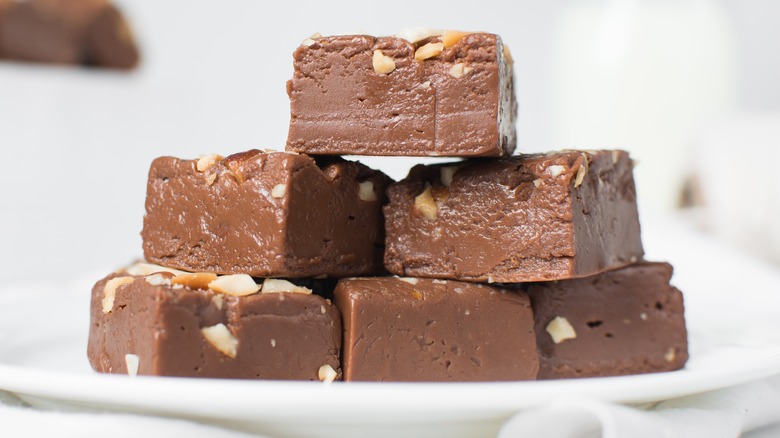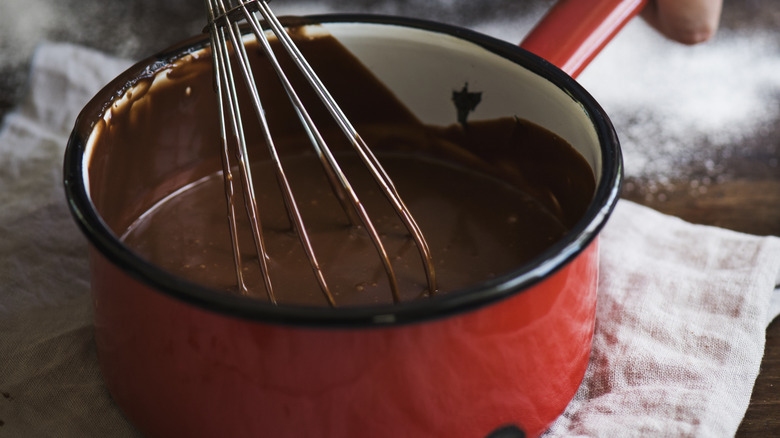The 3 Common Styles Of Fudge You Should Know
If your only experience with fudge has been purchasing it from a store, it's easy to forget about all the time and effort that goes into making this sweet treat. But if you've ever tried whipping it up at home, you know it can get a little tricky, depending on which method you use. While it can seem as if all fudge is the same (just with different flavors), there are actually three common ways to make it.
To get the lowdown on these varying methods, we turned to bean-to-bar chocolate specialist Preston Stewart, Director of Chocolate at Onyx Coffee Lab and Project Manager for Terroir Chocolate. According to Stewart, one of the best processes for beginners is called "cheater" fudge, and it's "the kind made with marshmallow fluff that is more forgiving ... the recipe can usually be found on jars of fluff." To make this type (which is also called fantasy fudge), melt sugar, butter, and evaporated milk together over the stove (while stirring constantly). Then boil everything for five minutes, take it off the heat, and stir in chocolate chips, any flavorings, and an entire jar of marshmallow fluff before cooling your fudge in a baking dish.
The easiest and most complex methods for making fudge
There is, however, another type of fudge you can try if you're new to making this treat, and that's quick or modern fudge. "Practically ganache, this type is usually just a bag of chocolate chips, a can of condensed milk, and a splash of vanilla heated in the microwave until the chips melt," Preston Stewart said. "This kind can be made very quickly compared to the others and is very forgiving. The texture tends to be smoother." Our three-ingredient dairy-free fudge substitutes sweetened condensed coconut milk for the regular version, but it follows basically the same process: Combine everything on low heat, then let it sit in the fridge.
The last method is sometimes known as old-fashioned fudge, and it's the trickiest to whip up. "This is the original finicky style that involves precise temperatures, lots of stirring, and is prepared as a more traditionally 'candy-style' dessert," said Stewart. In this case, you'll need a candy thermometer so you can determine exactly when your mixture reaches 234 degrees Fahrenheit. Stir the ingredients while they're coming to a boil, but stop once the heat is turned down — this is an important tip to remember when making fudge. Once it has completely cooled, beat the mixture until it stops looking glossy. This method takes the most practice and technique to nail down, but the results will turn out the most like the squares you purchase from a candy store.

